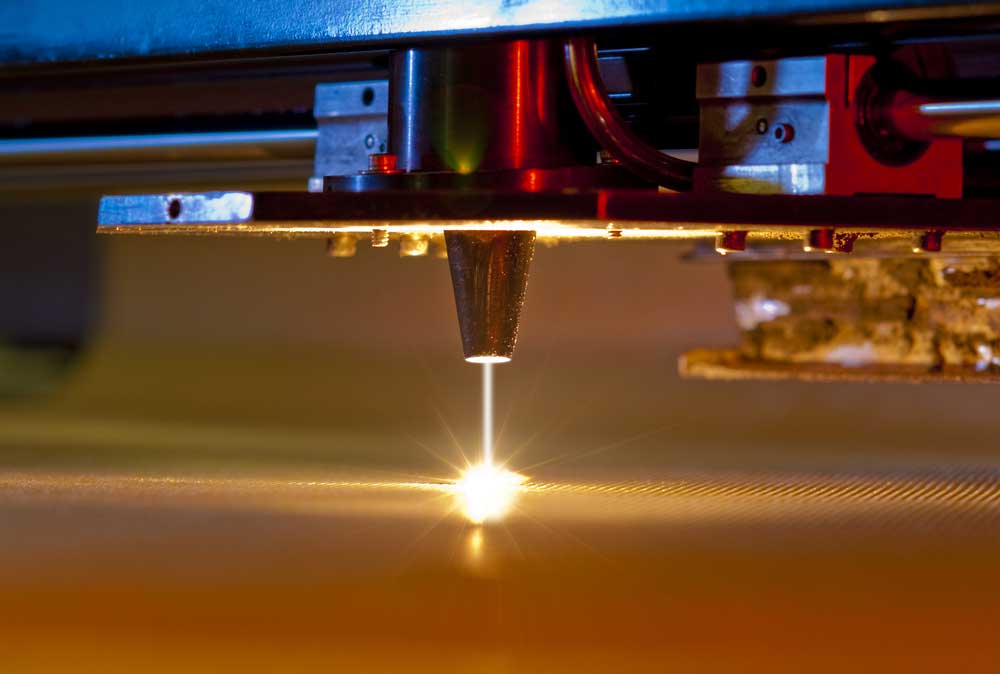Regarding professional wood-cutting methods, two prominent ways are CNC-router vs. laser-cutter.
Cutting and styling wood requires precision and skill, especially when you intend to inscribe a complex design on it.
Choosing the preferred wood-cutting option between a laser cutter and a CNC router can be confusing without the correct information. This is rightfully so because both are excellent methods used for the same purposes.
By noting the difference between a laser cutter and a CNC router for wood cutting, you will find it easier to choose your preferred wood-cutting method.
This blog post will review the difference between a laser cutter and a CNC router. This will help you understand the best cutter for your next wood-cutting project.
CNC Routers
The contemporary art of woodworking has taken a different angle with new and improved methods. One of these includes the advanced tools employed in wood-cutting.
Currently, most professional wood-cutting is done using a CNC machine. These tools make wood-cutting tasks quicker and more efficient.
Apart from speed and efficiency, these devices also increase wood-cutting possibilities.
A CNC is a computer-controlled device that performs actions following its programming.
It receives and interprets designs from a computer and uses them to direct a cutter in cutting wood.
Therefore, a CNC router is a computer-controlled (CNC) device that cuts through timbers by friction. It makes physical contact with the timber using a spindle-like tip (bit).
The cutting process
The cnc-router cutting process starts with the design, which is more or less the most complex part. First of all, create a design using software.
Once the design is ready, you save it in the system and send it to the machine.
Finally, place a piece of wood on the cutting surface and signal the machine to cut. The device interprets the design while moving the router around to make the same design on the wood.
The cutting depth
You can adjust a CNC router to cut to a precise depth by moving the cutter up or down to increase or reduce the height.
This was initially an advantage of the CNC router over a laser cutter whose depth of cut was traditionally impossible to control.
However, in recent years, new technology advancements have made 3D laser-cutting possible and more accessible.

A complex design made with a CNC router
Securing the material
The CNC-router mechanism implies that you bore through the wood using friction.
Consequently, the timbers must be tightly secured on the cutting surface. Otherwise, it is very likely to get spun by the router’s speed.
You can achieve this by clamping.
Pros
- Very effective in achieving rounded corners in wood timbers.
- Can accurately repeat the same design over and over again.
- Increases production speed and efficiency.
- They are large and, therefore, a more suitable choice when handling large-scale projects.
- They are safer on timbers that can’t tolerate heat.
Cons
- The width of the router bit limits the cutting precision of a CNC router. When making exact cuts, you can only make an incision as wide as the bit’s radius, which is a limiting factor.
- Fine bits are delicate and break easily, making carving detailed designs more difficult.
- The router-bit can create great tension, which might warp or damage the wood.
- Using a cnc-router machine is labor and skill-intensive. It takes a lot of work to secure the timber, and most times, you have to finish manually before you can achieve a clean edge.

Cutter with a laser-cutter
Laser cutter
A laser-cutter is a machine that cuts through timbers without making physical contact. It uses the mechanism of heat generated from an intense laser beam to make precise cuts or engravings on wood.
Making precision cuts
Compared to a CNC router, making very detailed designs is achievable with high precision. Unlike a router bit, a laser beam can be adjusted to make smaller cuts.
Cutting edges
Since laser-cutters use heat for laser-cutting wood, it the usually very clean. However, The heat can cause burning sometimes, leaving burn marks on wood. Although, the burning can create attractive outlines for aesthetic purposes.
However, there are some steps you can take to prevent or reduce burn marks on wood.
Pros
- Suitable for creating fine details even on thin timbers.
- Does not apply force on the timber; therefore, thin wood timbers are not at risk of warping or breaking during cutting.
- Burning of timber by the laser beam produces more finished edges, thus reducing the level of expansion and relaxation in cut wood.
- Does not require so much labor or finishing touches on cut timbers.
Cons
- Laser-cutting has limitations in cutting timber because it uses heat. Some timbers, such as plastic, can’t be cut with a laser beam.
- Timbers can get badly burnt and will require replacement.

A laser machine at work
Conclusion
When choosing a cutting tool between a laser cutter and a CNC-router machine, it is essential to understand your cutting needs.
A laser-cutting machine is more efficient when cutting thin or soft timbers like plywood, while a CNC-router machine works better when cutting more extensive timbers.
Even though skill is required to operate both devices, a CNC router poses more risk to the timber due to the pressure it applies during cutting.
Therefore, you must use extra carefulness when handling the cnc-router device.
The information in this review will help you choose a CNC router vs. a laser cutter for your next wood project.
